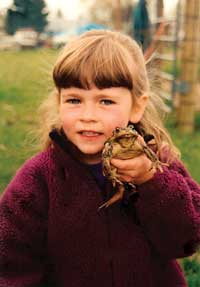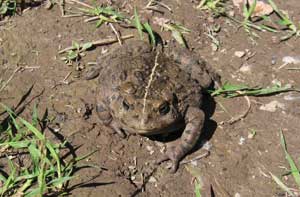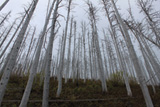Amphibians & Reptiles
Amphibians and reptiles are cold-blooded animals, meaning they control their body temperatures behaviorally using the sun and shade to keep themselves at an optimum temperature. The climate of the Flathead Watershed makes it a difficult place for these animals to survive, though 7 amphibian species and 9 reptilian species are native to the watershed. Amphibians (toads, frogs, and salamanders) have permeable skins, no claws, and their young typically spend some of their life cycle in a larval stage in ponds and streams.
The word amphibian is based on the ancient Greek terms “amphi” and “bios” which translate roughly to “both kinds of life.” Eventually it came to refer to creatures that live on both land and in the water. Reptiles (turtles, snakes, and lizards) have scales and typically have claws on their toes. Some species give birth to live young, while others hatch from eggs; in either case the young are small, air-breathing versions of their parents.
Scientists have been closely watching amphibians around the world over the past decade, alarmed as these species continue rapidly disappearing. Because they breathe through their skin, amphibians are especially sensitive to air and water pollutants. But there are other factors affecting their populations, including pollution, habitat loss, ozone layer depletion, and disease. Many scientists look to amphibians as “indicator” species, indicating the health of an environment by their presence. Of the 16 native species of amphibians and reptiles that live in the watershed, five—the Coeur d’Alene salamander (Plethodon idanoensis), western toad (Bufo boreas), northern leopard frog (Rana pipiens), northern alligator lizard (Elagaria coerulea), and western skink (Eumeces skiltonianus)—are listed as Montana Species of Concern.
 |
| Figure 2.71: Kacie Berget with western toad. Source: T. Berget |
The Western toad
Once one of the most abundant of amphibians in the watershed, the western toad (B. boreas) is now listed as a Species of Concern in Montana, and is on the B.C. Provincial Watch List. This 2.5 – 5 inch (6.4 – 12.7 cm) long toad is a dusty green color with a white or cream-colored stripe down its back. It is covered with small round and oval warts that range from green to red-brown and are encircled in a darker color. They live in areas with marshes, wet meadows, ponds, streams, lakes and reservoirs at various elevations. They eat a variety of insects, including ants, spiders, beetles, millipedes, earthworms, slugs, and daddy longlegs. Western toads spend the winter below frost line, often over four feet (1.2 m) underground.
Eggs are fertilized by males as the females deposit them in shallow, warmer water. Their two gelatinous strings of black round eggs hatch tadpoles in 7 to 12 days. The tadpoles are dark grey or black with large forebodies and fins that run the length of their tails. While adult toads are carnivores, tadpoles are herbivores, eating phytoplankton and algae. By the end of their first summer, the tadpoles metamorphose (change physical form) to a tiny toad less than 1/4 inch (6 mil) long and leave the water. They reach full maturity in four to five years, and may live 25 or more years. Western toads are protected under the British Columbia Wildlife Act.
 |
| Figure 2.72: Western toad on the Nyak. Source: Peter Winchell |
Rocky Mountain tailed frog
The Rocky Mountain tailed frog (Ascaphus montanus) is found in a small restricted area in the Kootenays of southern B.C. and throughout western Montana from the far north down past the southern end of the Flathead Watershed. Adult frogs range from tan or brown to olive green or red, with the lighter colored individuals having dark blotches. There is often a copper-colored bar or triangle between the eyes and snout. The tadpoles are black or brownish-grey and may have lighter flecks. The frog is small, 7/8 to 2 inches (2.2 to 5.1 cm), with a large head. Males have a short “tail” used during mating.
They are uniquely adapted to small, cold, clear, fast-flowing mountain streams with forested borders and boulders or cobbles. A small disc on the mouth of larvae is adapted to act as an adhesive sucker for clinging to rocks in swift currents. The Rocky Mountain tailed frog breeds in early fall. The female produces a double-strand of 50-80 colorless pea-sized eggs which she attaches to the underside of rocks or boulders. They have the largest eggs and take the longest time to hatch of all North American frogs. They remain tadpoles for up to five years, and reach sexual maturity at six to eight years after they metamorphose into frogs. Adults remain closely associated with their breeding creek throughout their lives, many moving less than 65 feet (20 m) per year and between years. The Rocky Mountain tailed frog is protected under the Canadian Species at Risk Act (SARA). Under the Canadian federal government, the SARA provides for legal protection of wildlife species and the conservation of their biological diversity, extending the government’s commitment to prevent wildlife species from becoming extinct.

